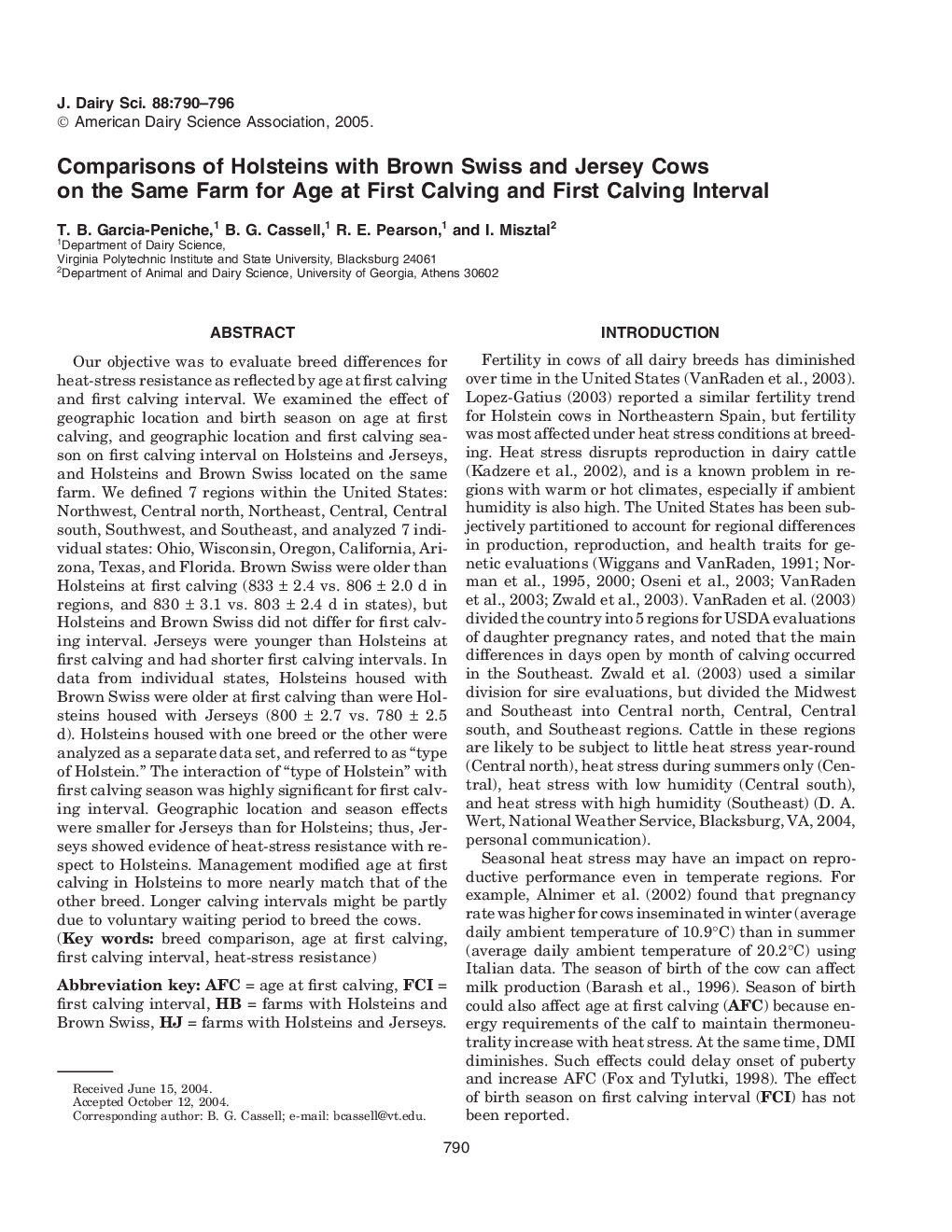| Article ID | Journal | Published Year | Pages | File Type |
|---|---|---|---|---|
| 8981200 | Journal of Dairy Science | 2005 | 7 Pages |
Abstract
Our objective was to evaluate breed differences for heat-stress resistance as reflected by age at first calving and first calving interval. We examined the effect of geographic location and birth season on age at first calving, and geographic location and first calving season on first calving interval on Holsteins and Jerseys, and Holsteins and Brown Swiss located on the same farm. We defined 7 regions within the United States: Northwest, Central north, Northeast, Central, Central south, Southwest, and Southeast, and analyzed 7 individual states: Ohio, Wisconsin, Oregon, California, Arizona, Texas, and Florida. Brown Swiss were older than Holsteins at first calving (833 ± 2.4 vs. 806 ± 2.0 d in regions, and 830 ± 3.1 vs. 803 ± 2.4 d in states), but Holsteins and Brown Swiss did not differ for first calving interval. Jerseys were younger than Holsteins at first calving and had shorter first calving intervals. In data from individual states, Holsteins housed with Brown Swiss were older at first calving than were Holsteins housed with Jerseys (800 ± 2.7 vs. 780 ± 2.5 d). Holsteins housed with one breed or the other were analyzed as a separate data set, and referred to as “type of Holstein.” The interaction of “type of Holstein” with first calving season was highly significant for first calving interval. Geographic location and season effects were smaller for Jerseys than for Holsteins; thus, Jerseys showed evidence of heat-stress resistance with respect to Holsteins. Management modified age at first calving in Holsteins to more nearly match that of the other breed. Longer calving intervals might be partly due to voluntary waiting period to breed the cows.
Related Topics
Life Sciences
Agricultural and Biological Sciences
Animal Science and Zoology
Authors
T.B. Garcia-Peniche, B.G. Cassell, R.E. Pearson, I. Misztal,
